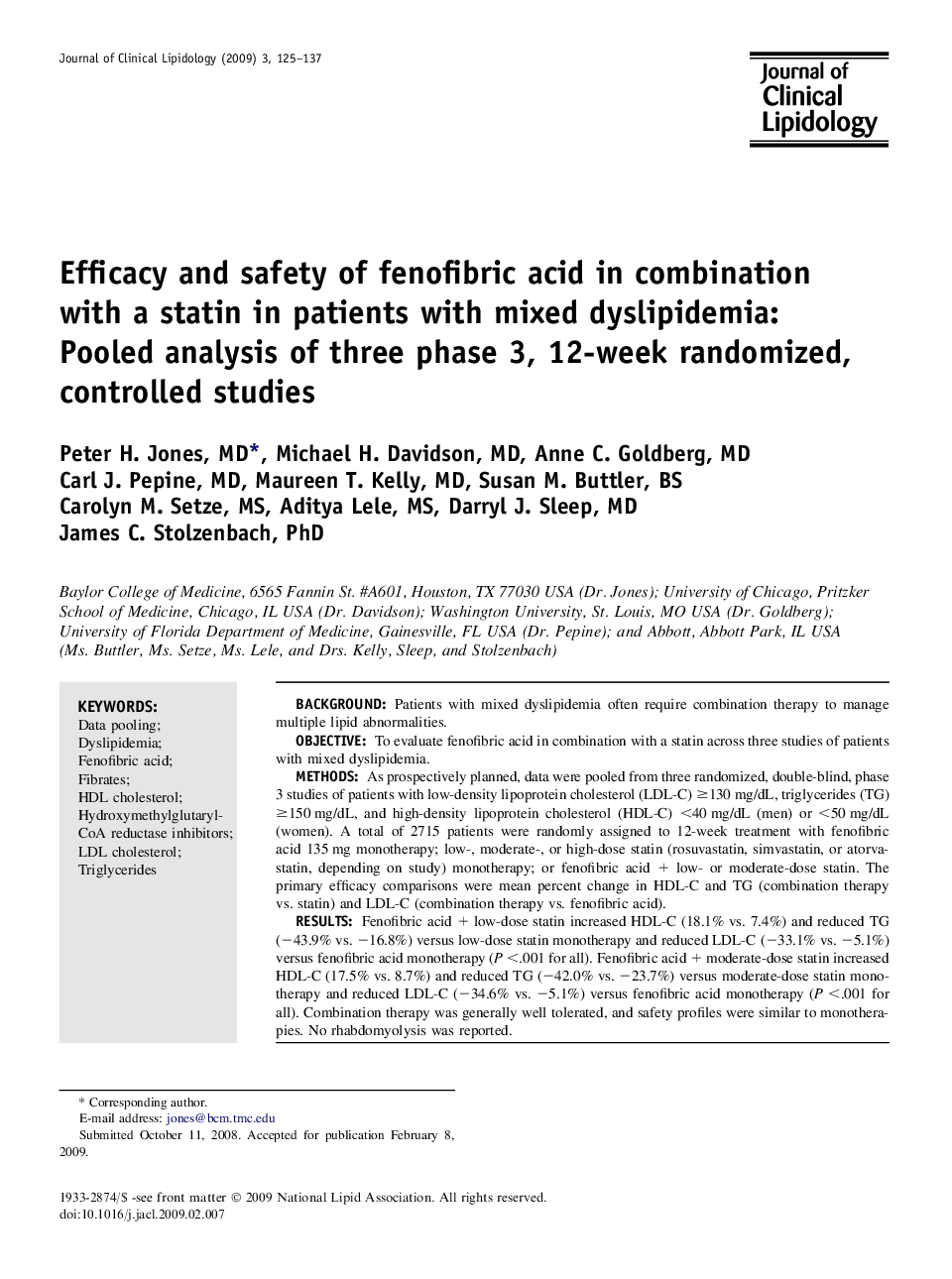| Article ID | Journal | Published Year | Pages | File Type |
|---|---|---|---|---|
| 2967169 | Journal of Clinical Lipidology | 2009 | 13 Pages |
BackgroundPatients with mixed dyslipidemia often require combination therapy to manage multiple lipid abnormalities.ObjectiveTo evaluate fenofibric acid in combination with a statin across three studies of patients with mixed dyslipidemia.MethodsAs prospectively planned, data were pooled from three randomized, double-blind, phase 3 studies of patients with low-density lipoprotein cholesterol (LDL-C) ≥130 mg/dL, triglycerides (TG) ≥150 mg/dL, and high-density lipoprotein cholesterol (HDL-C) <40 mg/dL (men) or <50 mg/dL (women). A total of 2715 patients were randomly assigned to 12-week treatment with fenofibric acid 135 mg monotherapy; low-, moderate-, or high-dose statin (rosuvastatin, simvastatin, or atorvastatin, depending on study) monotherapy; or fenofibric acid + low- or moderate-dose statin. The primary efficacy comparisons were mean percent change in HDL-C and TG (combination therapy vs. statin) and LDL-C (combination therapy vs. fenofibric acid).ResultsFenofibric acid + low-dose statin increased HDL-C (18.1% vs. 7.4%) and reduced TG (−43.9% vs. −16.8%) versus low-dose statin monotherapy and reduced LDL-C (−33.1% vs. −5.1%) versus fenofibric acid monotherapy (P <.001 for all). Fenofibric acid + moderate-dose statin increased HDL-C (17.5% vs. 8.7%) and reduced TG (−42.0% vs. −23.7%) versus moderate-dose statin monotherapy and reduced LDL-C (−34.6% vs. −5.1%) versus fenofibric acid monotherapy (P <.001 for all). Combination therapy was generally well tolerated, and safety profiles were similar to monotherapies. No rhabdomyolysis was reported.ConclusionIn patients with mixed dyslipidemia, combination therapy simultaneously improved multiple lipid abnormalities more effectively than fenofibric acid or statin monotherapies.
